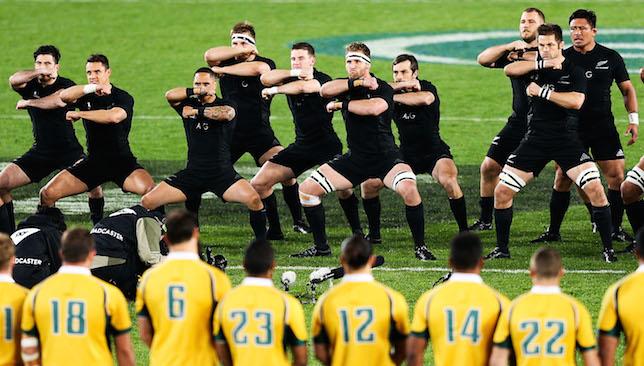
New Zealand and Australia represent the gold standard for all international teams and, given that four of the seven previous finals have been decided by a score or less, Saturday’s final is likely to be decided by small margins.
– VIDEO: Cheika claims “there’s no secret squirrel”
– VIDEO: McCaw to make decision on future after final
– RWC15: Wallaby prop Sio returns for final
Here, Sport360 analyses the key areas and individual match-ups that will prove critical in establishing who will lift the World Cup.
Up front
From a rainy day quarter-final against Scotland to a punishing semi against scrum-kings Argentina, the Wallaby pack has stood up to the sternest of examinations and have dispelled with aplomb any assertions that they are a soft touch.
Mario Ledesma’s influence has been notable in firming up the Aussie scrum while also making it a new weapon for them.
The good, bad and ugly: Cheika’s assembly of talent (Ledesma / Larkham) @Wallabies has turned ’em into potential champs. N.B. @EnglandRugby
— Martin Gillingham (@MartGillingham) October 12, 2015
The All Blacks typically do not use the scrum as an attacking weapon but will feel confident in their ability to win their own put-ins and contain their counterparts.
Sunshine is forecast at Twickenham and with New Zealand’s greater fitness, they should edge this contest in the final 20 minutes.
The breakdown
For the past decade Richie McCaw has been unchallenged as king of the breakdown, but in the last six weeks his crown has been passed to David Pocock.
The Australian flanker has been simply outstanding in the tournament, slowing opposition ball down and forcing turnovers with ease to further stifle attacks.

It is master against teacher, but with Pocock’s trusty side-kick Michael Hooper in tow, the Wallabies are surely favourites to dominate this area once more.
The All Blacks favour a fast-paced game so if Australia are to win, it will start at the tackle-area and their ability to restrict quick ball.
Half-back battle
Australia’s half-backs have picked their game up a notch for the World Cup with Bernard Foley in particular submitting a level of creativity that has seen his critics backtrack somewhat while Will Genia has been assured and his box-kicking, particularly in defensive position, is underrated.
However, in Aaron Smith and Dan Carter, they will be coming up against a superior paring in almost every facet of the game.
HEARTS AND MINDS @DanCarter explains what representing the @AllBlacks means to him… #RWCFinal pic.twitter.com/8Bb3cnt8Bm
— Rugby World Cup (@rugbyworldcup) October 31, 2015
Carter has rediscovered his best form in the 10 jersey that had South Africa totally bamboozled with a combination of intelligent kicks, fearless tackling and even a drop-kick.
Smith is showing maturity well beyond his years to manage his team’s attack and keep opposition flankers honest with penetrating snipes.
In midfield
A fascinating duel will see guile of Matt Giteau and Tevita Kuridrani take on a very similar opposition, a more experienced, force of Ma’a Nonu and Conrad Smith.
While Giteau and Smith have yet to find their best form in the tournament, the veterans have used all of their experience to organise their team’s defence.
Kuridrani’s quarter and semifinal performances were up there with his best, the superlative form of Ma’a Nonu may decide this contest.
Used as a battering-ram in his formative years, the dreadlocked centre has refined his all-round game and poses a far superior threat with his play-making abilities and extra pace on the outside.
Out wide
New Zealand’s Julian Savea announced his return to form with a hat-trick against France. Opposite him Australia winger Drew Mitchell is close behind with 14 tries in World Cup history and has been one of his side’s most potent threats.
Adam Ashley-Cooper has performed admirably in this tournament with a string of vital tackles and tries but with the X-factor of Nehe Milner-Skudder and Israel Folau’s slump in form, New Zealand should have the better of their opponents.
But Milner-Skudder’s poor performance under the high ball against South Africa will have been pickedup by the Wallabies and expect Foley to test him in this area once again.
Tactical and goalkicking
Against South Africa, Aaron Smith, Dan Carter and even Ma’a Nonu put on a tactical-kicking masterclass that both frustrated the Springboks’ rush-defence and proved the All Blacks can adapt to any conditions.
Bernard Foley is first and foremost a kicking fly-half who has the added benefit of a play-making inside centre in Giteau who can also be called upon to relieve pressure.
That said, he has missed key kicks – notably against Scotland – and in their two knock matches Australia have a 62 per cent success rate from the tee, compared to 80 per cent for the All Blacks. A missed penalty or conversion could be the difference.
The two coaches
All Black boss Steve Hansen’s approach is unfussy, simply bringing the best out of an outstanding group of individuals who all leave any egos firmly at the door.
Ego is something Michael Cheika has had to address since taking over a fractured Wallabies dressing room last year. But as well as being a great motivator and unifying presence, Cheika has shown himself to also be a canny tactician.
Cheika’s Pocock and Hooper experiment excelled against New Zealand in Sydney before he decided against fielding them in the Auckland match which the All Blacks won comfortably. Expect him to have a few more tricks up his sleeve.